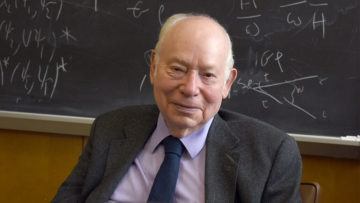Scott Aaronson in Shtetl-Optimized:
 Steven Weinberg was, perhaps, the last truly towering figure of 20th-century physics. In 1967, he wrote a 3-page paper saying in effect that as far as he could see, two of the four fundamental forces of the universe—namely, electromagnetism and the weak nuclear force—had actually been the same force until a tiny fraction of a second after the Big Bang, when a broken symmetry caused them to decouple. Strangely, he had developed the math underlying this idea for the strong nuclear force, and it didn’t work there, but it did seem to work for the weak force and electromagnetism. Steve noted that, if true, this would require the existence of a new particle that hadn’t yet been seen — the Z boson — and would also require the existence of the previously-proposed Higgs boson.
Steven Weinberg was, perhaps, the last truly towering figure of 20th-century physics. In 1967, he wrote a 3-page paper saying in effect that as far as he could see, two of the four fundamental forces of the universe—namely, electromagnetism and the weak nuclear force—had actually been the same force until a tiny fraction of a second after the Big Bang, when a broken symmetry caused them to decouple. Strangely, he had developed the math underlying this idea for the strong nuclear force, and it didn’t work there, but it did seem to work for the weak force and electromagnetism. Steve noted that, if true, this would require the existence of a new particle that hadn’t yet been seen — the Z boson — and would also require the existence of the previously-proposed Higgs boson.
By 1979, enough of this picture (in particular, the Z boson) had been found that Steve shared the Nobel Prize in Physics with Sheldon Glashow—Steve’s former high-school classmate—as well as with Abdus Salam, both of whom had separately developed pieces of the same puzzle. As arguably the central architect of what we now call the Standard Model of elementary particles, Steve was in the ultra-rarefied class where, had he not won the Nobel Prize in Physics, it would’ve been a stain on the Nobel Prize rather than on him.
More here.
